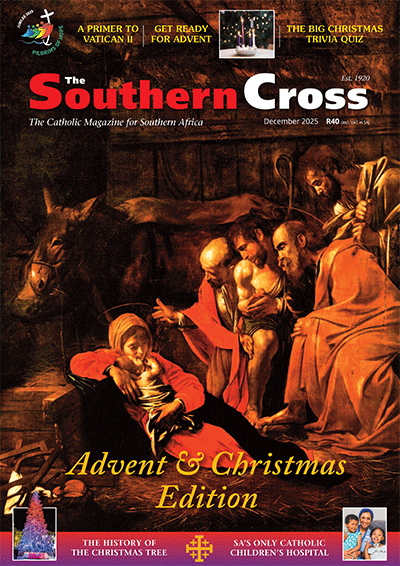Unity in Christian diversity
 Vatican II had a lot to say about the scandal of divided Christianity, indeed a whole decree (Unitatis Redintegratio, 1964) was written about ecumenism. And non-Catholics welcomed it enthusiastically. Yet we are still far from unity.
Vatican II had a lot to say about the scandal of divided Christianity, indeed a whole decree (Unitatis Redintegratio, 1964) was written about ecumenism. And non-Catholics welcomed it enthusiastically. Yet we are still far from unity.
Perhaps, let me suggest, the mystery of the Trinity can help us a bit. I say perhaps because the doctrine of the Trinity is one of the most complex mysteries of the Christian faith, where a misplaced word or even a comma out of synch can lead one into the dread realm of heresy. In this way it�s not unlike ecumenism: pray and work together, even worship together, but don�t share Communion! Similarly, just as we seem to have resolved one theological difference, four others seem to arise.
Trinitarian theology often distinguishes between what is called the immanent and economic Trinity. With the former, argue many theologians, we should say very little: here the inner nature of the Trinity is profound mystery that we can never really understand.
Better then, particularly for those of us who are not systematic theologians, to focus on the economic Trinity. Here, we can say how God acts�Father, Son and Spirit share in creation, incarnation and redemption and always acting together in communion.

“The Black Abbey Trinity” a reproduction of an Irish statue dating from 1234. In his article Fr Egan suggests that the theology of the Holy Trinity is a little like ecumenism.
For ecumenism, perhaps, we may be able to derive a few insights. Catholics, Orthodox and Protestants need to work together towards a unity in diversity. If the �goal� of ecumenism is uniformity�everyone becoming Roman Catholic or Orthodox or Protestant�the process towards Christian union is, I fear, doomed to fail. Too much history has happened, too much diversification and too many painful memories of mutual excommunication, loathing and persecution have occurred.
Vatican II took bold first steps towards unity in diversity by abandoning terminologies of �heretics� (for Protestants) and �schismatics� (for Orthodox) in favour of �separated brethren�.
They noted in particular that we had little theological disagreement with the Orthodox. Where we disagreed was over the Orthodox understanding of the papacy. The Council noted that greater disagreement, to greater or lesser degrees, existed with the Protestant churches, most notably over interpretations of the Eucharist, church government and ministry.
There has been both progress and backsliding since Vatican II. While there have been positive developments�over justification by faith for example�there have also been logjams, over the Eucharist and papal authority. Some of the newer evangelical churches have retained old �anti-papist� prejudices, while many Catholics have tended to use the less welcoming term �ecclesial communities�, a term that suggests religious deficiency in Protestantism.
None of this helps, particularly in a rapidly secularising world where the temptation of all churches has been to withdraw into dogmatic or biblical fundamentalism. The idea, that adhering to rigid doctrinal, biblical or structural �authority� will stem the tide is, I would suggest, mistaken. The drive for absolute certainty that leads people into conservative religion offers only temporary comfort: denial is no long-term solution to having to face the reality of economic, political, social and cultural complexity. The danger is that many who take this option will, when faced by the fact it has not worked, reject religion completely.
The alternative, what I speculatively call the Trinitarian Alternative, is to acknowledge and welcome unity in diversity. While each tradition celebrates its particular way of being Christian, it puts aside rivalries and lets go of past resentments so that it works in union to proclaim the Gospel, drawing upon the riches of each other�s traditions.
Sometimes the churches would act in common, sometimes separately, but never against one another, while the theologians and leaders of the respective communions work to build greater theological and structural common ground.
We can start by saying (as I think the Council Fathers were suggesting) that we are all members of �one holy, catholic and apostolic church�, all sharing in the classic formulas of the Creed and the common ecumenical councils of the first millennium.
By analogy this might be seen as the �immanent Church�. How our different churches have interpreted the common sources and have developed differing practices can be seen as the �economic Church�. No matter how these things differ, we can see all Christians working with each other even when we do things differently or separately.
A Trinitarian approach as I�ve suggested may not resolve all differences between Catholics, Orthodox and Protestants but at least it will reduce the hostility, arrogance and separation that currently wounds the Body of Christ.
- Saint Paul and the Bible - July 29, 2019
- Religious Orders: Then and Now - November 6, 2018
- A Brief History of Religious Orders in South Africa - October 25, 2018





